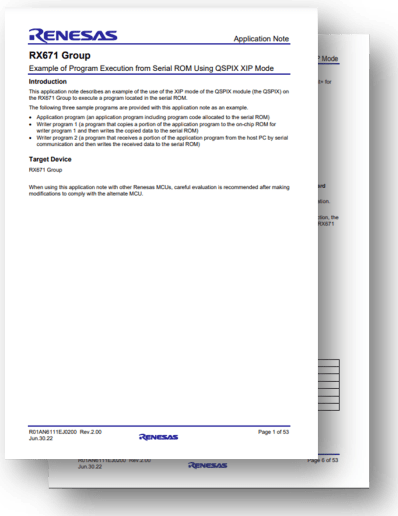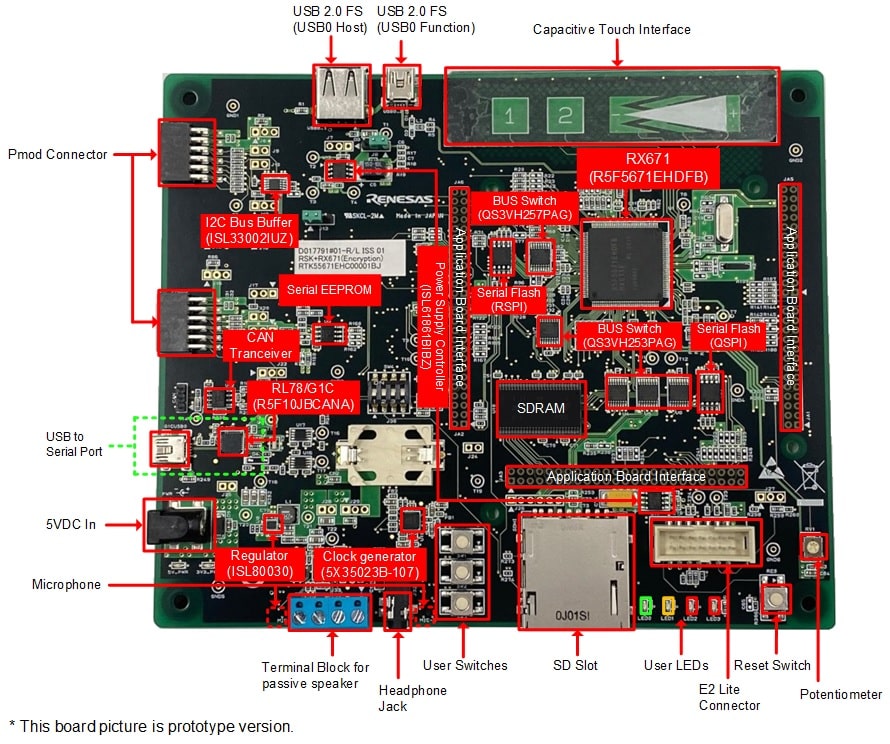The program code size of IoT devices such as smart meters and home appliances tends to increase due to functionality enhancement. When MCU’s internal Flash memory faces capacity shortage, adding external Flash memory can be a solution. Among various kinds of memory, developers choose to adopt QSPI serial Flash which can also reduce the number of MCU pins used.
However, it is necessary to copy the code stored in the QSPI serial Flash into the internal RAM for execution. In this way, loading time increases during system startup. XIP mode is the solution to overcome this challenge.
By using MCU and serial Flash that support this mode, the serial Flash memory mapping is seen as another memory region in the MCU memory map, and CPU can directly access the code.
Renesas 32-bit RX671 MCU supports the XIP mode and meets the requirements for serial Flash connectivity. This time, we have released an Application Note “Example of Program Execution from Serial ROM Using QSPIX XIP Mode” as a reference so that you can easily evaluate and develop software for RX671 using XIP mode.
The following three sample programs are provided with this Application Note.
- Application program (an application program including program code allocated to the serial ROM)
- Writer program 1 (a program that copies a portion of the application program to the on-chip ROM for writer program 1 and then writes the copied data to the serial ROM)
- Writer program 2 (a program that receives a portion of the application program from the host PC by serial communication and then writes the received data to the serial ROM)
Application program (1) includes the initial settings of the RX671, enabling QSPI XIP mode, and the program allocated to the serial Flash. Writer programs (2) and (3) are used to store programs in the serial Flash.

You can see the initial settings of the RX671 and how to execute the code in the serial Flash with (1), and how to store a program in the serial Flash with (2) and (3). By referring to this Application Note, you can easily and quickly implement QSPI XIP mode for RX671.
This Application Note references RX671 evaluation kit Renesas Starter Kit+ for RX671. This evaluation board allows users to evaluate the full functionalities of the RX671, such as the touch button, microphone, SD slot, and the QSPI serial Flash. We recommend you use this kit for function evaluation and PoC development.

The XIP mode function allows easy expansion of the code area. You can develop a large-scale and efficient system by storing the frequently read code in the internal Flash and storing rest of the code in the serial Flash.
Another blog on the features of the RX671 is the following.
Please visit: The New RX671 Microcontroller Meets the Ever-evolving Demands of IoT Devices
